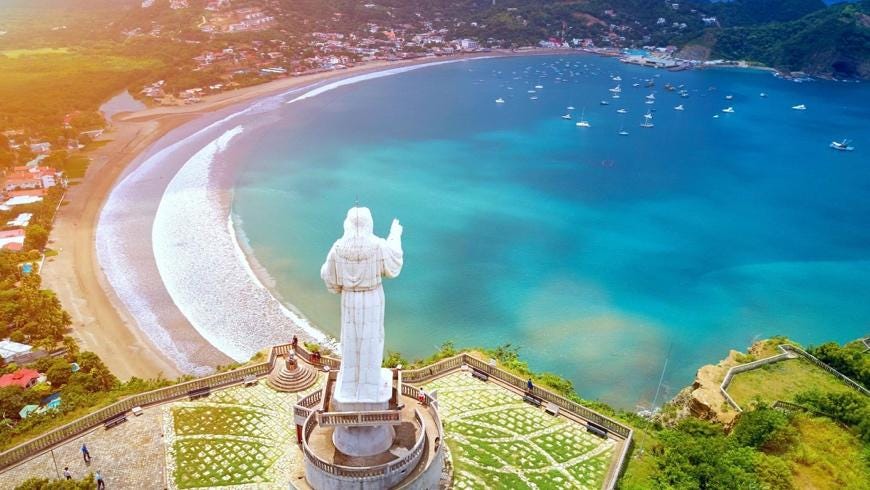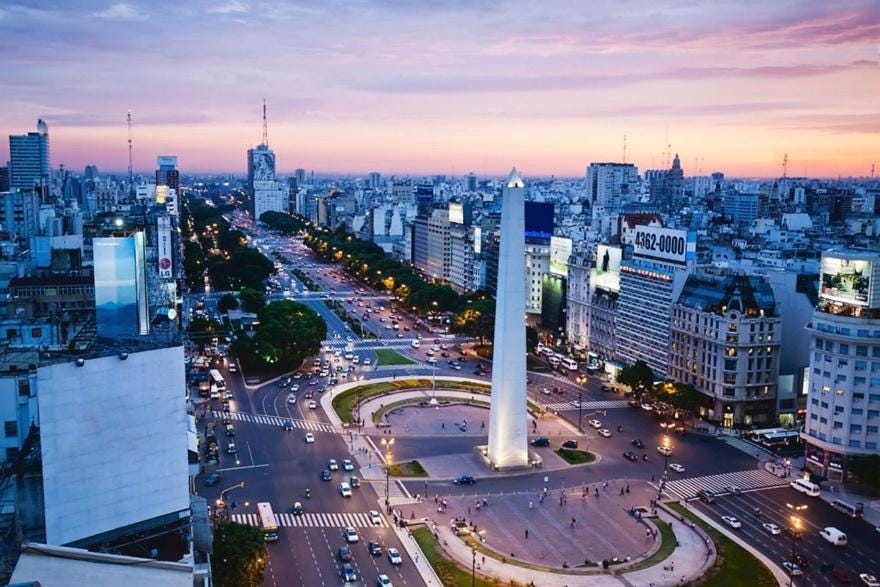Latin American and Covid Restrictions | Which Countries Were the Freest?
And how this *may* matter in the future...
Written by esteemed LatAm scholar: @GringoGuerrilla
It’s no secret that most countries vastly overreacted to the Covid-19 pandemic and continued doing so despite evidence that lockdowns were ineffective.
Regrettably, Latin America was no exception.
That said, there were some countries that adopted at least somewhat of a measured approach.
First, let’s look at the Latin American countries that maintained an element of freedom during the pandemic despite international pressure.
Later, we’ll talk about the implications of this and what it might mean to someone looking for the “freest” countries in Latin America to travel to or live in.
The Best Latin American Countries to be in During the “Pandemic”
While most of the world was completely shutdown, certain countries in LatAm didn’t impose as draconian measures.
Here’s a few of them…
🇲🇽 Mexico 🇲🇽
Our far and away winner in Latin America for freedom during the pandemic is Mexico. It’s the only country in Latin America and one of the few countries in the world that never required a negative covid test to enter its territory.
Additionally, it never imposed draconian lockdowns on its citizens or residents. Most businesses were allowed to remain open if they followed certain rules.
Even in Mexico City, the city that imposed some of the strictest lockdowns in the country, most establishments were permitted to do business so long as they adhered to capacity laws and adopted sanitary measures.
And there were certain areas within Mexico that did damn near nothing about the “scamdemic” and allowed citizens to make their own choices — especially along the Pacific coast.
🇨🇷 Costa Rica 🇨🇷
As one of Latin America’s more “progressive” countries so to speak, it was a pleasant surprise to see Costa Rica adopt more flexible measures than its Central American counterparts.
It never had a full lockdown, and it was the first nation in Central America to allow international travel. It was also among the first countries in Central America to ditch all restrictions related to the pandemic.
🇳🇮 Nicaragua 🇳🇮
Nicaragua is a complicated case.
Although it was one of the few countries in Latin America that never fully implemented a lockdown for its citizens, it was one of the strictest countries in the region for international travelers.
Indeed, to this day, it still requires proof of vaccination or a negative covid test for tourists.
The Ortega regime isn’t exactly freedom loving, so it would be dubious to suggest that its response to covid means much in the whole scheme of things. But the fact remains that its citizens were less restricted than the vast majority other countries…at least as far pandemic regulations were concerned.
🇧🇷 Brazil 🇧🇷
Another complicated case.
Although President Bolsonaro was critical of lockdowns and skeptical of covid vaccines, he didn’t have much pull at the state level to influence things in any meaningful way.
State governors had the power to impose as strict lockdowns as they saw fit and indeed many elected to do so — particularly cities and states in the Northeast, for instance.
That said, it was still one of the better countries in Latin America to be during the pandemic…all things considered. It’s relative, after all.
The Worst Latin American Countries to be in During the “Pandemic”
Personally, some of these countries became complete “no-go zones” for me after seeing how terribly they handled the ‘rona.
Here’s the worst of the bunch…
🇵🇦 Panama 🇵🇦
Panama is one Latin American country that went crazy during covid.
It imposed a curfew preventing anyone from leaving their homes between 9pm and 5am each day — and soon took things a step further with an even more arbitrary lockdown that separated men and women:
Women were allowed out for 2 hours on Mondays, Wednesdays, and Fridays to buy essential goods. Men were allowed out on Tuesday, Thursday, and Sundays.
After introducing these illogical measures, it went as far as to implement an even stricter 5pm curfew in addition to separating women and men.
Panama is essentially a “no-go zone” nowadays due to this bullshit.
🇦🇷 Argentina 🇦🇷
Argentina implemented the world’s longest lockdown: 160 consecutive days to “stop the spread.”
Locals were only allowed to leave their homes to buy groceries or medicine.
The lockdown dealt yet another severe blow to Argentina’s already disastrous economy.
Argentina has since opened things up, but still, the asinine lockdown laws are a massive red flag for the future.
🇵🇪 Peru 🇵🇪
Peru wasted no time with its lockdown, which it imposed in March 2020, earlier than the vast majority of European countries.
It shut its borders to all international travel, only allowed its citizens to leave for essential goods, and detained thousands of people for violating its curfew.
It did nothing, of course, as Peru ended up having some of the highest infection rates in the region.
Peru was also home to “double masking” requirements that appealed to only the lowest of low IQ individuals.
Sadly, the lockdowns have hurt the economy and one of the safest countries in Latin America has seen a strong uptick in crime lately — especially in Lima.
🇨🇴 Colombia 🇨🇴
The commies are winning in Colombia.
Colombia’s six-month lockdown meant that locals could only leave their homes for groceries or medical attention and dealt a devastating blow to its economy.
The country went as far as to require the use of facemasks outdoors, which is something most first-world countries never did.
What About Other Latin American Countries?
The response of other Latin American countries lies somewhere in the middle.
For instance, at the start of the pandemic, El Salvador’s President Nayib Bukele imposed some of the strictest lockdowns in the region. However, after it became clear that such measures weren’t effective and were causing economic harm, he removed all restrictions, including for international travel.
A similar case occurred in Paraguay, which was one of the first countries in South America to close its airport and impose a strict curfew on its citizens. Later, it reconsidered, eliminated its curfew, and opened its borders.
Uruguay took a similar approach, initially reacting quite strongly but easing its restrictions after a while.
I highlight these countries for a reason.
While it may be natural to assume that conversative countries in Latin America may have responded more reasonably to the pandemic, this wasn’t necessarily the case.
Some of the strictest lockdowns in the region were quickly imposed by right or center-right governments, such as in El Salvador, Paraguay, and Colombia, whereas left wing governments such as AMLO’s Mexico and Ortega’s Nicaragua allowed its citizens more freedom.
Again, in the case of Nicaragua, just in terms of the pandemic. I’m not here to downplay the fact that Ortega is a dictator and is rather fond of imprisoning political opponents and journalists.
And while it may be tempting to think that right-wing countries were at least quicker to moderate their approaches once the writing was on the wall, this isn’t necessarily true either – for instance, despite imposing one of the world’s strictest lockdowns, left-wing Argentina was one of the first countries in the region to abandon travel restrictions and open its borders.
P.S. Depressingly, all Latin Americans embraced the mask mandate without question.
What Does This Mean For “Freedom? in the Future?
When evaluating pandemic responses in Latin America that bode well for freedom, again, it’s important not to reduce things to political affiliation — tempting as it may be.
However, at the very least, one would like to think that citizens of nations that weren’t exposed to draconian lockdowns and observed their neighbors suffering to no benefit — may be less willing to accept such measures lying down in the future — like climate lockdowns, or whatever they come up with next, for instance.
If such an incident were to occur again – based on pure policy – Mexico might be the best choice.
After all, it was the only country in Latin America that remained consistent on never closing its borders, never requiring a test to enter, and never imposing a full lockdown.
Policy aside, perhaps I’d pick a larger, more sparsely populated country, with regions where government tentacles may not be able to reach as easily. Examples being: Paraguay or Argentina come to mind…for instance, most Paraguayan Mennonites residing in the Chaco never bought into covid restrictions or vaccine hysteria but were left alone nonetheless.
And, to end things off, there’s another metric that may be of interest to some now that the dust has settled.
I’ll go ahead and leave that here.
Number of COVID-19 vaccination doses per 100 population administered in Latin America and the Caribbean as of February 23, 2023, by country










